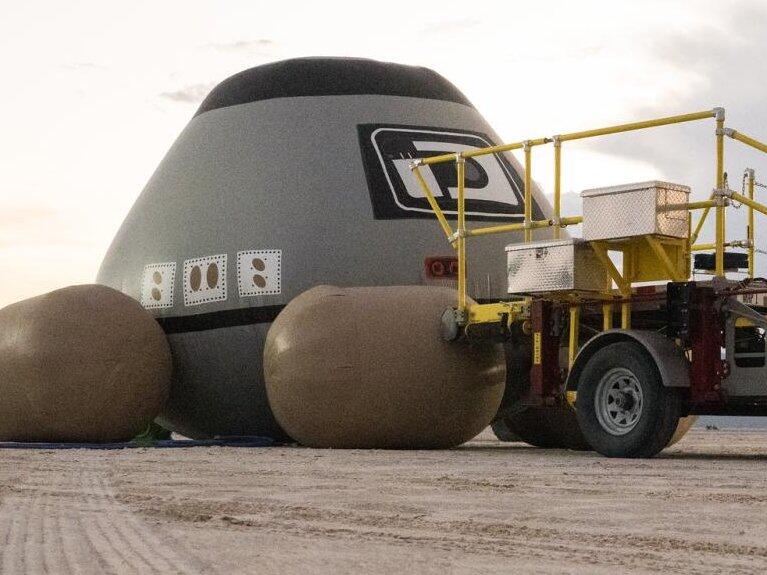Physical Address
304 North Cardinal St.
Dorchester Center, MA 02124
Physical Address
304 North Cardinal St.
Dorchester Center, MA 02124

On September 6, the uncrewed Boeing Starliner successfully undocked from the International Space Station (ISS), initiating its journey back to Earth with a landing expected in New Mexico within six hours.
The autonomous undocking from the ISS occurred at precisely 6:04 p.m. The craft was disconnected from the forward module of the station and began a slow retreat, executing a series of 12 “breakout burns” over five minutes. This maneuver allowed Starliner to distance itself from the station as it flew over central China.
A timeline released by NASA outlined several phases for the Starliner mission, including the autonomous undocking, a de-orbit burn, and the landing of the capsule. The targeted landing at White Sands Space Harbor in New Mexico is scheduled for 12:03 a.m. Saturday.
By 6:24 p.m., Starliner had cleared the ISS’s “approach ellipsoid,” officially marking the start of its journey back to Earth.
The spacecraft’s flight trajectory was projected to take it over parts of northern Mexico and southwestern New Mexico, potentially making it visible in the night sky in those regions, depending on weather conditions.
This mission follows the Boeing spacecraft’s launch on June 5, which marked its first crewed flight. During that launch, NASA astronauts Butch Wilmore and Suni Williams were transported to the ISS. However, issues arose as the craft neared the space station, with NASA and Boeing discovering helium leaks and malfunctions in the reaction control thrusters.
Due to safety concerns for the astronauts, NASA decided last month that Wilmore and Williams would remain aboard the ISS until February. Meanwhile, Starliner will autonomously return to Earth without a crew on board. Wilmore and Williams are now set to come back to Earth aboard SpaceX’s Dragon spacecraft, alongside two other crew members involved in NASA’s SpaceX Crew-9 mission.
As planned, after separating from the ISS, Starliner will fire a series of departure rockets. When approaching Earth, the spacecraft will perform a deorbit burn lasting about 60 seconds. This maneuver is designed to slow it down sufficiently for re-entry and ensure a precise landing.
During re-entry, the service module of Starliner is expected to burn up over the southern Pacific Ocean. The heat shield will be released around 30,000 feet, allowing a series of drag and parachute systems to deploy. Once at 3,000 feet, an additional heat shield will be jettisoned, and six inflatable landing bags will be activated, with a landing speed of approximately 4 miles per hour at White Sands.
Source: UPI



